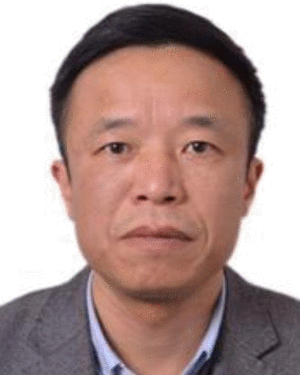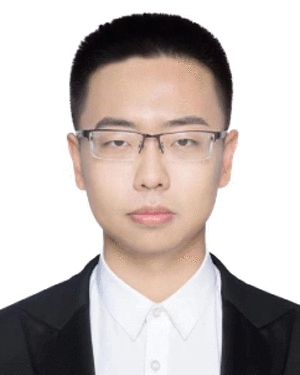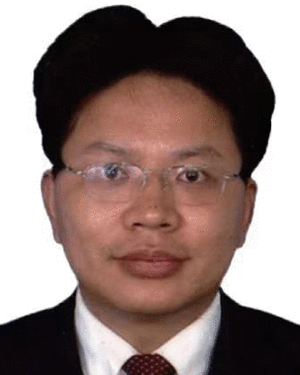Abstract:
Active steering control significantly improves the curving performance of rail vehicles. However, failures can occur in any part of the active control system. As failure ...Show MoreMetadata
Abstract:
Active steering control significantly improves the curving performance of rail vehicles. However, failures can occur in any part of the active control system. As failure in an actuator can directly affect the running attitude of the bogie, fault-tolerant control for such failures is particularly important. In this study, a fault-tolerant control method is proposed based on the classical active steering control structure, where each axle is equipped with two actuators. First, the optimal yaw angles of the wheelset under constraints are obtained in the control layer; then, the performance index reflecting the allocation and actual implementation effects is introduced in the allocation layer. Subsequently, the fault-tolerant control effect is analyzed for four typical fault cases: self-lock, back to zero, cutoff, and abnormal action. The results show that compared to the traditional geometric control method, the fault-tolerant control method not only maintains the steering control effect under fault cases but also ensures the running safety of the bogie after an actuator failure. Next, the weights of the cost functions in the allocation layer are analyzed; it is recommended that the weight for allocation effect should not be smaller than 0.1, as it can affect the redistribution transition process. Finally, it is proved that the controller has good parametric robustness. The results can be used as a reference for fault-tolerant control of active steering systems.
Published in: IEEE Transactions on Vehicular Technology ( Volume: 73, Issue: 5, May 2024)
Funding Agency:

Institute of Rail Transit, Tongji University, Shanghai, China
Shiqiao Tian (Member, IEEE) received the bachelor's degree in vehicle engineering, the master's degree in transportation engineering, and the doctor degree in vehicle engineering from Tongji University, Shanghai, China, in 2014, in 2017, and 2020, respectively. His research interests include rail vehicle dynamics and active steering control.
Shiqiao Tian (Member, IEEE) received the bachelor's degree in vehicle engineering, the master's degree in transportation engineering, and the doctor degree in vehicle engineering from Tongji University, Shanghai, China, in 2014, in 2017, and 2020, respectively. His research interests include rail vehicle dynamics and active steering control.View more

Institute of Rail Transit, Tongji University, Shanghai, China
Xiangping Luo received the bachelor's degree and the master's degree in vehicle engineering from Shanghai Railway University, Shanghai, China, in 1990. He is currently an Associate Professor with the Institute of Rail Transit of Tongji University, Shanghai. His research interests include rail vehicle system dynamics and structural strength fatigue.
Xiangping Luo received the bachelor's degree and the master's degree in vehicle engineering from Shanghai Railway University, Shanghai, China, in 1990. He is currently an Associate Professor with the Institute of Rail Transit of Tongji University, Shanghai. His research interests include rail vehicle system dynamics and structural strength fatigue.View more

Institute of Rail Transit, Tongji University, Shanghai, China
Chunyu Xiao received the bachelor degree in vehicle engineering in 2017 from Tongji University, Shanghai, China, where he is currently working toward the doctoral degree in vehicle engineering. His research focuses on development and integration of active steering control system for railway vehicles.
Chunyu Xiao received the bachelor degree in vehicle engineering in 2017 from Tongji University, Shanghai, China, where he is currently working toward the doctoral degree in vehicle engineering. His research focuses on development and integration of active steering control system for railway vehicles.View more

Institute of Rail Transit, Tongji University, Shanghai, China
Han Leng received the bachelor's degree in vehicle engineering and the master's degree in transportation engineering in 2017 and 2020, respectively, from Tongji University, Shanghai, China, where he is currently working toward the doctorate degree in vehicle engineering. His research interests include vehicle system dynamics and autonomous driving and control.
Han Leng received the bachelor's degree in vehicle engineering and the master's degree in transportation engineering in 2017 and 2020, respectively, from Tongji University, Shanghai, China, where he is currently working toward the doctorate degree in vehicle engineering. His research interests include vehicle system dynamics and autonomous driving and control.View more

Institute of Rail Transit, Tongji University, Shanghai, China
Jinsong Zhou received the bachelor's degree and the master's degree in vehicle engineering from Shanghai Railway University, Shanghai, China, in 1994, and the doctor degree in mechanical engineering with Shanghai Jiaotong University, Shanghai. He is currently a Professor with the Institute of Rail Transit, Tongji University, Shanghai. His research focuses on rail vehicle vibration and control.
Jinsong Zhou received the bachelor's degree and the master's degree in vehicle engineering from Shanghai Railway University, Shanghai, China, in 1994, and the doctor degree in mechanical engineering with Shanghai Jiaotong University, Shanghai. He is currently a Professor with the Institute of Rail Transit, Tongji University, Shanghai. His research focuses on rail vehicle vibration and control.View more

Institute of Rail Transit, Tongji University, Shanghai, China
Shiqiao Tian (Member, IEEE) received the bachelor's degree in vehicle engineering, the master's degree in transportation engineering, and the doctor degree in vehicle engineering from Tongji University, Shanghai, China, in 2014, in 2017, and 2020, respectively. His research interests include rail vehicle dynamics and active steering control.
Shiqiao Tian (Member, IEEE) received the bachelor's degree in vehicle engineering, the master's degree in transportation engineering, and the doctor degree in vehicle engineering from Tongji University, Shanghai, China, in 2014, in 2017, and 2020, respectively. His research interests include rail vehicle dynamics and active steering control.View more

Institute of Rail Transit, Tongji University, Shanghai, China
Xiangping Luo received the bachelor's degree and the master's degree in vehicle engineering from Shanghai Railway University, Shanghai, China, in 1990. He is currently an Associate Professor with the Institute of Rail Transit of Tongji University, Shanghai. His research interests include rail vehicle system dynamics and structural strength fatigue.
Xiangping Luo received the bachelor's degree and the master's degree in vehicle engineering from Shanghai Railway University, Shanghai, China, in 1990. He is currently an Associate Professor with the Institute of Rail Transit of Tongji University, Shanghai. His research interests include rail vehicle system dynamics and structural strength fatigue.View more

Institute of Rail Transit, Tongji University, Shanghai, China
Chunyu Xiao received the bachelor degree in vehicle engineering in 2017 from Tongji University, Shanghai, China, where he is currently working toward the doctoral degree in vehicle engineering. His research focuses on development and integration of active steering control system for railway vehicles.
Chunyu Xiao received the bachelor degree in vehicle engineering in 2017 from Tongji University, Shanghai, China, where he is currently working toward the doctoral degree in vehicle engineering. His research focuses on development and integration of active steering control system for railway vehicles.View more

Institute of Rail Transit, Tongji University, Shanghai, China
Han Leng received the bachelor's degree in vehicle engineering and the master's degree in transportation engineering in 2017 and 2020, respectively, from Tongji University, Shanghai, China, where he is currently working toward the doctorate degree in vehicle engineering. His research interests include vehicle system dynamics and autonomous driving and control.
Han Leng received the bachelor's degree in vehicle engineering and the master's degree in transportation engineering in 2017 and 2020, respectively, from Tongji University, Shanghai, China, where he is currently working toward the doctorate degree in vehicle engineering. His research interests include vehicle system dynamics and autonomous driving and control.View more

Institute of Rail Transit, Tongji University, Shanghai, China
Jinsong Zhou received the bachelor's degree and the master's degree in vehicle engineering from Shanghai Railway University, Shanghai, China, in 1994, and the doctor degree in mechanical engineering with Shanghai Jiaotong University, Shanghai. He is currently a Professor with the Institute of Rail Transit, Tongji University, Shanghai. His research focuses on rail vehicle vibration and control.
Jinsong Zhou received the bachelor's degree and the master's degree in vehicle engineering from Shanghai Railway University, Shanghai, China, in 1994, and the doctor degree in mechanical engineering with Shanghai Jiaotong University, Shanghai. He is currently a Professor with the Institute of Rail Transit, Tongji University, Shanghai. His research focuses on rail vehicle vibration and control.View more


